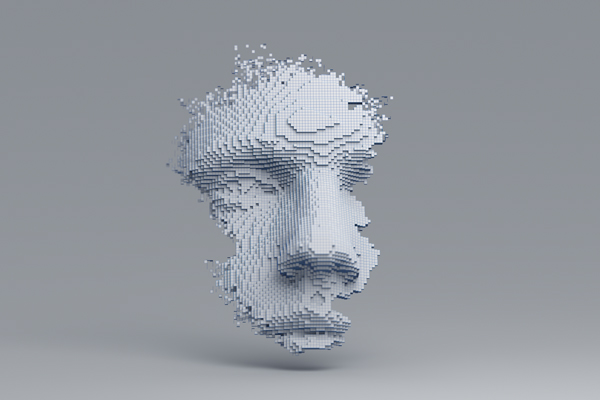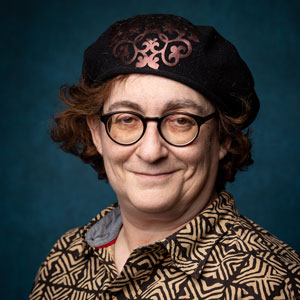Oct 10, 2019 By: yunews

Shulamith Z. Berger
Curator of Special Collections and Hebraica-Judaica Does your name belong to you? What about your photo or image? Does it matter if you’re dead or alive? May your name or likeness be used for commercial purposes?
These queries fall under the question of publicity rights, defined by Black’s Law Dictionary as “the right to control the use of one’s own name, picture, or likeness and to prevent another from using it for commercial benefit without one’s consent.”
A well-known legal case exploring this concept was Hebrew University vs. General Motors, regarding GM’s use of Albert Einstein’s image in an advertisement. The Hebrew University claimed exclusive rights to Einstein’s name and likeness as a beneficiary under Einstein’s will. The case was brought to the United States District Court Central District of California in 2012. The court ruled that the right of publicity lasted no longer than fifty years after an individual’s demise, thus releasing Einstein’s name and image for public use.
The Albert Einstein College of Medicine, opened by Yeshiva University not long after Einstein’s death in 1955, would not have been affected by the California court’s ruling, no matter the outcome of the case. In 1951, Albert Einstein wrote a letter to Dr. Samuel Belkin, president of the University, expressing his “great satisfaction that Yeshiva University is planning to establish a medical school.” Dr. Belkin suggested naming the medical for Einstein; Einstein countered that a Jewish medical school should be named for Maimonides. Though “Einstein resisted, Belkin persisted,” and by 1953, Einstein agreed to allow Yeshiva University to name the medical school for him.
On Einstein’s 74th birthday on March 14, 1953, Belkin presented him with a model of the medical school at a press conference in Princeton, New Jersey. Many newspapers covered the event; a headline in the New York Times proclaimed “Dr. Einstein gives name to a college,” and the article portrayed the media presence: “Amid the flashing of photographers’ bulbs, the whirring of newsreel cameras, and the glare of television lights, he was notified that the Yeshiva University Medical School had been named the Albert Einstein College of Medicine.” The Yeshiva University Archives holds a recording of Einstein’s 1953 statement to the press: “I am grateful that Yeshiva University has honored me by using my name in connection with the new College of Medicine.” No one can argue with that!
Nonetheless, the depiction of the coverage of the press conference in 1953 is relevant to the nature of publicity rights. Just imagine all the equipment needed in 1953; today, if necessary, a cell phone would suffice. Over the past century, the means of communication have progressed by leaps and bounds, and the speed and immediacy of distribution has increased exponentially. Researchers who request photographs from the archives are frequently surprised by the dearth of photos of important university personalities or events; they find it hard to picture that everyone didn’t have a cell phone camera immediately at hand. Beginning with photography in the early 20th century, followed by radio, telegraph, film and television, and then the advent of digital cameras and technology—all these developments coupled with nearly instantaneous dissemination available via the internet have inexorably altered the landscape of use, and thus potentially misuse and abuse, of names and images for commercial purposes. Will the line between commercial use and other uses blur as the boundaries between commerce and social network media fray on the web? Will new methods of communication be invented? How will these developments affect or change laws of publicity rights?
Stay tuned!
Does your name belong to you? What about your photo or image? Does it matter if you’re dead or alive? May your name or likeness be used for commercial purposes?
These queries fall under the question of publicity rights, defined by Black’s Law Dictionary as “the right to control the use of one’s own name, picture, or likeness and to prevent another from using it for commercial benefit without one’s consent.”
A well-known legal case exploring this concept was Hebrew University vs. General Motors, regarding GM’s use of Albert Einstein’s image in an advertisement. The Hebrew University claimed exclusive rights to Einstein’s name and likeness as a beneficiary under Einstein’s will. The case was brought to the United States District Court Central District of California in 2012. The court ruled that the right of publicity lasted no longer than fifty years after an individual’s demise, thus releasing Einstein’s name and image for public use.
The Albert Einstein College of Medicine, opened by Yeshiva University not long after Einstein’s death in 1955, would not have been affected by the California court’s ruling, no matter the outcome of the case. In 1951, Albert Einstein wrote a letter to Dr. Samuel Belkin, president of the University, expressing his “great satisfaction that Yeshiva University is planning to establish a medical school.” Dr. Belkin suggested naming the medical for Einstein; Einstein countered that a Jewish medical school should be named for Maimonides. Though “Einstein resisted, Belkin persisted,” and by 1953, Einstein agreed to allow Yeshiva University to name the medical school for him.
On Einstein’s 74th birthday on March 14, 1953, Belkin presented him with a model of the medical school at a press conference in Princeton, New Jersey. Many newspapers covered the event; a headline in the New York Times proclaimed “Dr. Einstein gives name to a college,” and the article portrayed the media presence: “Amid the flashing of photographers’ bulbs, the whirring of newsreel cameras, and the glare of television lights, he was notified that the Yeshiva University Medical School had been named the Albert Einstein College of Medicine.” The Yeshiva University Archives holds a recording of Einstein’s 1953 statement to the press: “I am grateful that Yeshiva University has honored me by using my name in connection with the new College of Medicine.” No one can argue with that!
Nonetheless, the depiction of the coverage of the press conference in 1953 is relevant to the nature of publicity rights. Just imagine all the equipment needed in 1953; today, if necessary, a cell phone would suffice. Over the past century, the means of communication have progressed by leaps and bounds, and the speed and immediacy of distribution has increased exponentially. Researchers who request photographs from the archives are frequently surprised by the dearth of photos of important university personalities or events; they find it hard to picture that everyone didn’t have a cell phone camera immediately at hand. Beginning with photography in the early 20th century, followed by radio, telegraph, film and television, and then the advent of digital cameras and technology—all these developments coupled with nearly instantaneous dissemination available via the internet have inexorably altered the landscape of use, and thus potentially misuse and abuse, of names and images for commercial purposes. Will the line between commercial use and other uses blur as the boundaries between commerce and social network media fray on the web? Will new methods of communication be invented? How will these developments affect or change laws of publicity rights?
Stay tuned!